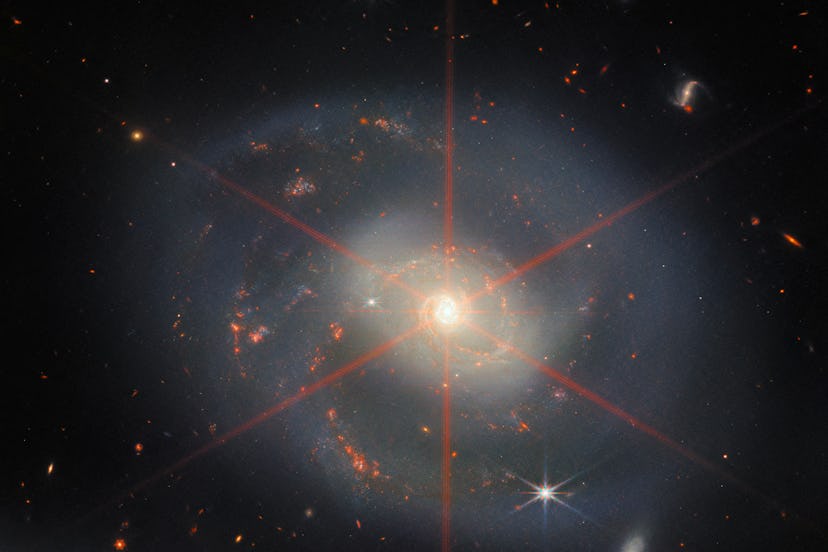This Beautiful JWST Photo Reveals A Wreath Of Stars and Dazzling Swirls
The new image is taken from the JWST and shows off a festive wreath that looks like a magical galaxy.

NASA has released another photo showing the absolute wonder of space. Taken from the James Webb Space Telescope (JWST), the new image shows off a festive wreath that looks like a magical star for us laymen and offers unique opportunities for scientists to learn more about black hole growth and star formation.
The image shows a subtle orange-red swirl surrounded by hazy dust, which stands out from the dark black sky. At the center of the swirl is a bright ball with six red spikes shooting out of it. Surrounding the swirl are various sizes of orange and yellow dots, and together the image looks like a sci-fi depiction of a galaxy — but this one is real. So, what are we looking at?
Can you explain this image to me as if I were five years old?
According to NASA, the image at the center of the image has a name — the NGC 7469. The NGC 7469 described as being a “luminous, face-on spiral galaxy.” The galaxy is huge — and really far away from Earth — being approximately 90,000 light-years in diameter and roughly 220 million light-years away from Earth in the Pegasus constellation.
What you’re seeing at the center of the spiral galaxy is an “active galactic nucleus (AGN),” NASA notes, which is “an extremely bright central region that is dominated by the light emitted by dust and gas as it falls into the galaxy’s central black hole.”
This area has been studied as part of the Great Observatories All-sky LIRGs Survey, also called GOALS, and the Early Release Science program. The joint NASA, ESA, CSA collaboration aims to study how stars form and how black holes grow, and the NGC 7469 has been an area of great interest in gathering that feedback because of its AGN.
“This galaxy provides astronomers with the unique opportunity to study the relationship between AGNs and starburst activity because this particular object hosts an AGN that is surrounded by a starburst ring at a distance of a mere 1500 light-years,” NASA explains.
The JWST allows astronomers to explore the starburst ring, gas, dust, and the AGN in ways that was previously impossible. And it allows us — stargazers, that is — to enjoy beautiful images of the great beyond.
This article was originally published on